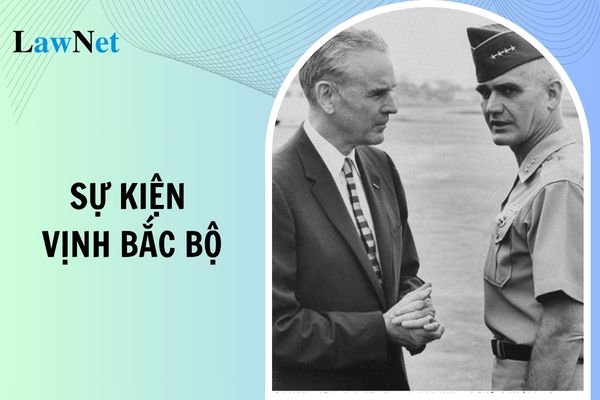What war strategy did the U.S. implement on the basis of the Gulf of Tonkin Incident? What is the grade at which students in Vietnam initially learn war strategies of the U.S.?
What war strategy did the U.S. implement on the basis of the Gulf of Tonkin Incident?
The Gulf of Tonkin Incident in 1964 was when the U.S. claimed that North Vietnamese forces attacked U.S. warships in international waters. The United States used the Gulf of Tonkin Incident as a pretext to initiate the first wave of bombings in the North (1965–1968).
Simultaneously, the Gulf of Tonkin Incident served as a basis for the U.S. to implement the "Search and Destroy" Strategy in South Vietnam (1965–1968).
Overview of the "Search and Destroy" Strategy
The "Search and Destroy" Strategy was a military strategy launched by the U.S. in South Vietnam from 1965 to 1968, as part of the Vietnam invasion. This marked a significant escalation in military operations following the failure of the "Special Warfare" strategy.
- Conspiracies:
+ The U.S. aimed to quickly seize the initiative on the battlefield, suppress the revolutionary movement and weaken the forces of the National Front for the Liberation of South Vietnam.
+ The objective was to pacify the South within two years, maintain puppet government policies, and create favorable conditions for negotiations with the advantage on the U.S. side.
- Tricks:
+ Deploying U.S. and allied troops directly into combat: For the first time, the U.S. used ground forces in large numbers in the South, mobilizing hundreds of thousands of U.S. and allied troops (from South Korea, Australia, New Zealand, etc.) alongside the Saigon army.
+ Utilizing the "search and destroy" strategy: The U.S. concentrated large forces equipped with modern technology to conduct large-scale operations aimed at destroying the main forces of the Liberation Army in South Vietnam.
+ Intensifying rural pacification: Conducting pacification campaigns to occupy and destroy revolutionary infrastructures in rural areas.

What war strategy did the U.S. implement on the basis of the Gulf of Tonkin Incident? What is the grade at which students in Vietnam initially learn war strategies of the U.S.? (Image from the Internet)
What is the grade at which students in Vietnam initially learn war strategies of the U.S.?
According to the General education program in History and Geography at the lower secondary level issued with Circular 32/2018/TT-BGDDT, the learning outcomes required for 9th-grade History and Geography are stipulated as follows:
- Introduce notable achievements in the construction of socialist North Vietnam (completing land reforms, economic restoration and development, supporting the revolution in the South, resisting U.S. imperialist warfare,...).
- Describe significant military victories by the people of South Vietnam during the anti-American resistance from 1954 to 1975 (the Dong Khoi movement; defeating the "Special Warfare," "Search and Destroy," and "Vietnamization" strategies of the U.S.; the Tet Offensive of 1968, 1972; the Ho Chi Minh Campaign of 1975,...).
- State the reasons for victory and the historical significance of the anti-American resistance.
Thus, war strategies of the U.S. are initially taught in the 9th-grade History and Geography curriculum.
What are the general orientations for 9th-grade History and Geography in Vietnam?
Under the General education program in History and Geography at the lower secondary level issued with Circular 32/2018/TT-BGDDT, the general orientations for 9th-grade History and Geography in Vietnam are as follows:
- Emphasize the active role of students in learning, fostering positivity, initiative, and creativity; overcoming one-way imposition and rote memorization;
- Focus on training skills to apply knowledge to practice, nurturing learning methods, and self-study capacity so students can further explore and expand their necessary cultural knowledge.
- Employ a flexible and creative use of teaching methods and techniques suitable to educational goals, content, students, and specific conditions. Combine traditional teaching methods (lecturing, discourse,...) aimed at promoting student positivity and initiative with increasing use of advanced teaching methods that emphasize the student's active role (discussions, debates, role-playing, project-based learning,...).
- Diversify and flexibly use various forms of learning organization: Combining individual, group, classroom, fieldwork, and project-based learning. Emphasize teaching methods that are characteristic of the subject.
- Strengthen the application of information and communication technology, effectively utilizing teaching aids such as models, historical artifacts, pictures, audio recordings of historical figures,...; maps, diagrams, statistical and comparative tables,...; videos; worksheets containing source materials; educational software,... to illustrate lectures and support student learning activities.

